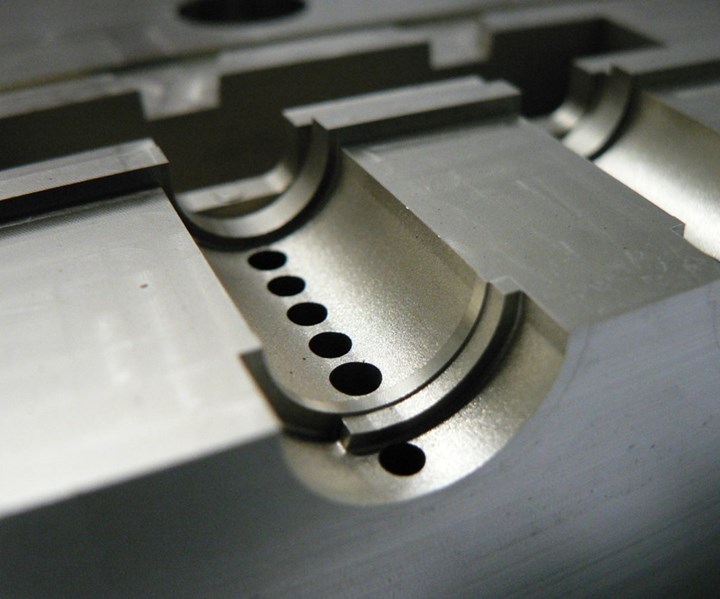How to Dramatically Increase Mold Life with the Right Coating
Injection mold components experience remarkable wear and tear as high-temperature polymers, often with abrasive and corrosive additives, are injected into the mold. A challenge is how to maintain the efficiency of the component that was witnessed during the first 10,000 cycles. Maybe it just needs a little PVD.
#basics #FAQ
Physical Vapor Deposition (PVD coating) can make tooling materials harder, corrosion-resistant, and present a lower surface energy to help with the ejection and release of molded parts.
Here is an example involving a large mold builder who contacted us after experiencing yield loss and downtime from a worn valve gate. Forced through a tiny 0.8mm gate hole, an abrasive elastomer caused excessive wear widening the gate and causing an unacceptable gate vestige.
Featured Content
Gate inserts wouldn’t work due to the valve gate system and the moldmaker needed a solution that would withstand the abrasive nature of the elastomer without altering the tight tolerances of the mold.
With PVD the source material is ionized creating a high energy material used to impregnate the mold substrate. Different combinations of alloys can be used with this process, such as titanium, nitrides, carbides, and oxides.
For most injection mold coatings, a zirconium nitride is used, which provides the hardness to withstand millions of shots of abrasive material and the lubricity required for effective release of the part. A standard, uncoated mold may have a hardness of around 45 Rockwell C. A titanium nitride or zirconium nitride coating will have a hardness of around 80 Rockwell C. And tolerances are maintained.
After impregnating the 32-cavity mold and mold components with a zirconium nitride injection mold coating, the tool was able to run for well over two million cycles.
A coating can be anywhere from four hundred nanometers to five microns thick and because of the high energy process, the material is an integral part of the mold substrate, not a layered veneer, which can chip or crack.
The PVD process can be performed on a variety of materials, including stainless steel, hardened steels, aluminum, 3D printed polymers, even metal or plastic parts that are injection molded or CNC machined.
For this particular mold builder the gates were failing within the first 100,000 shots. After impregnating the 32-cavity mold and mold components with a zirconium nitride injection mold coating, the tool was able to run for well over two million cycles.
Plastic injection mold tools have yield issues in other components beyond the gate. Other components of the mold, such as screws, bushings, barrels, slides, lifters, check rings and the cavities are susceptible to wear and tear. These can all be PVD coated to extend the life of the mold, protect your investment and decrease downtime.
RELATED CONTENT
-
Technology Roundup: Maintenance, Repair, Surface Treatment Tools
Selecting the right maintenance, repair or surface treatment tool is critical to making an operation run smoothly, and sometimes it can determine if it runs at all.
-
Technologies for Maintaining, Repairing and Surface Treating Your Molds
This technology roundup covers everything from laser repair and mold protection coatings to in-house maintenance services and education tools for learning best practices behind taking care of injection molds.
-
MMT Chats: Injection Molds and Integrated Solutions Through Ambition and Innovation
MoldMaking Technology Editorial Director Christina Fuges checks in with Jordan Robertson, VP, Business Development and Marketing for StackTeck in Ontario, Canada about various mold technologies to improve efficiencies in automation, cooling, lightweighting and sustainability. This episode is brought to you by ISCAR with New Ideas for Machining Intelligently.













